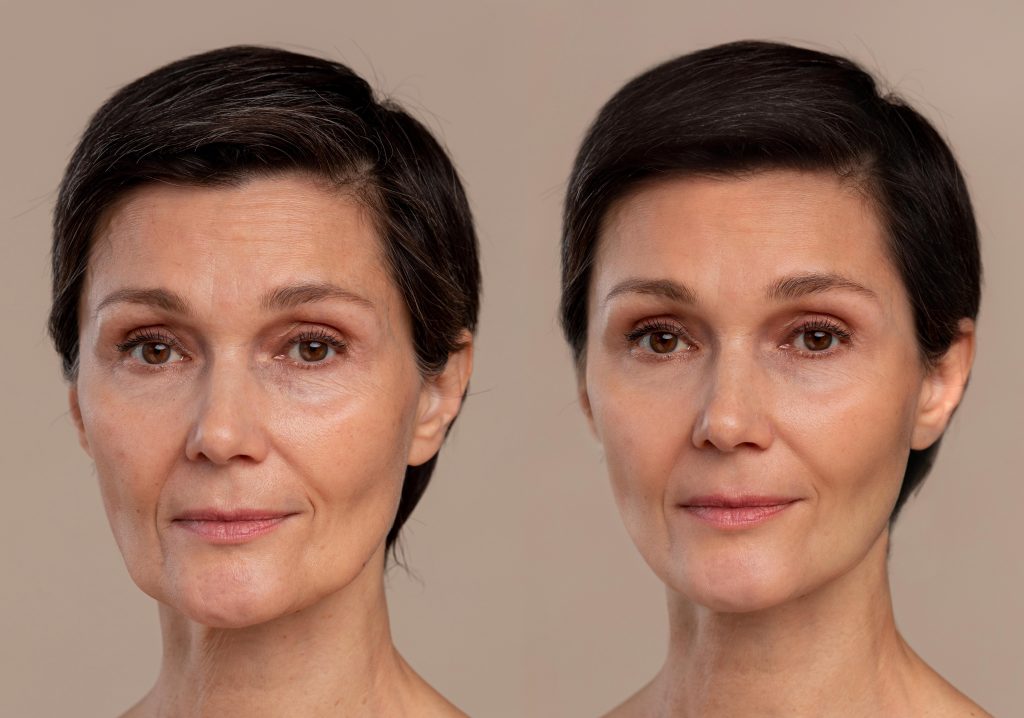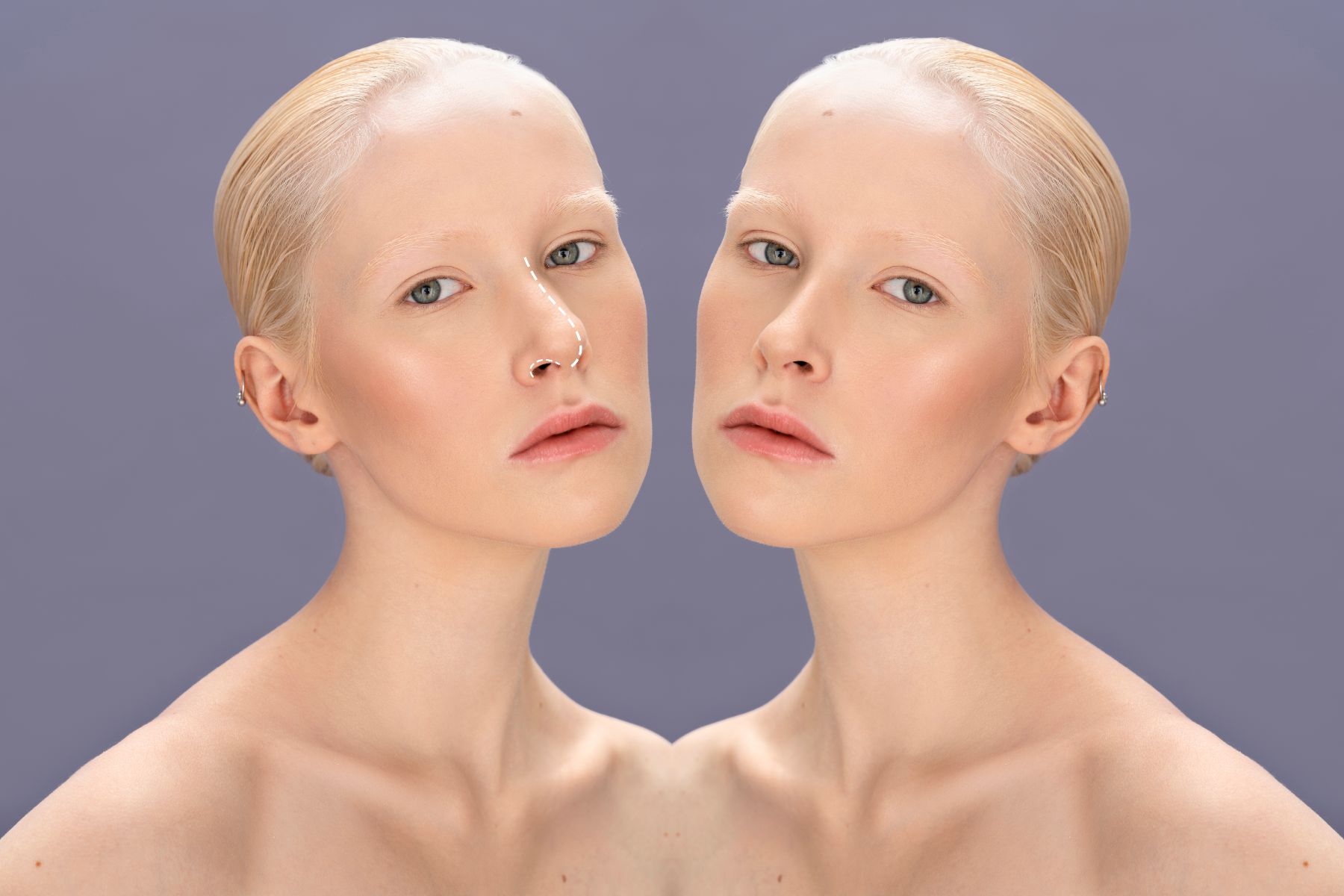Blog
Best Age for Blepharoplasty: Is 40 Too Early or 60 Too Late?
- September 20, 2025
- 3 Minutes Read

Questions about timing dominate cosmetic surgery consultations. When it comes to eyelid surgery, one of the most frequent queries is whether there’s an ideal age for blepharoplasty. People in their late thirties sometimes feel hesitant, worrying they might be acting prematurely. Others in their sixties ask if the opportunity has already passed. But is there really such a thing as “too early” or “too late”?
This article will examine age, lifestyle, and anatomy to clarify the best window for blepharoplasty while drawing on insights from Dr Stavrou at EIPS.
Why Age Matters, but Doesn’t Dictate Everything
Age certainly influences healing capacity, skin elasticity, and long-term results. However, it should not be the only deciding factor. Two people of the same age can present with entirely different eyelid concerns. A 42-year-old may already show significant puffiness due to genetics, while a 62-year-old may have only mild sagging.
What truly matters is the presence of structural changes, excess skin, displaced fat, or drooping lids that affect either appearance or vision. So, instead of asking “what age is right,” perhaps a better question is “what signs suggest surgery is appropriate?”
Common Triggers for Considering Surgery
- Obstructed vision caused by overhanging upper lids
- Persistent under-eye bags that remain regardless of rest
- Excess skin folds creating heaviness or irritation
- Aged appearance unresponsive to creams or injectables
These issues often appear between 40 and 60, but the timing varies widely.
Blepharoplasty in Your 30s and Early 40s
At this stage, skin typically retains elasticity. Patients in their late 30s or early 40s who seek surgery often do so because of hereditary puffiness or premature drooping rather than age alone.
A case at EIPS involved a 39-year-old teacher who constantly received comments about looking tired despite feeling energetic. Blepharoplasty gave her a more awake appearance, helping align her outer look with her vitality.
So, is 40 too early? Not if the condition significantly affects self-esteem or daily function.
Blepharoplasty in Your 50s
The fifties often bring clearer signs of ageing. Collagen decline and gravity combine to create drooping lids, heavier folds, and puffier under-eyes. For many, this decade has become the most common time to undergo blepharoplasty.
Patients appreciate that results often last well into their sixties or seventies. By choosing surgery in the fifties, they set themselves up for a refreshed look during a period that may include career milestones, family celebrations, and active social lives.
Blepharoplasty in Your 60s and Beyond
Some patients hesitate to undergo surgery later in life, fearing they may be too old. Yet healthy individuals in their sixties or seventies can benefit tremendously. The main considerations are overall health, skin quality, and realistic expectations.
One 67-year-old patient at EIPS chose surgery because sagging lids were interfering with reading. Post-surgery, she not only regained clearer sight but also remarked that friends thought she looked ten years younger.
So, is 60 too late? Absolutely not, provided the patient is fit for surgery and understands healing may take slightly longer.
Table: What to Expect by Age Group
Age Group | Typical Concerns | Surgical Benefits |
30s–40s | Genetic puffiness, early drooping | Subtle, natural correction that lasts decades |
50s | Sagging lids, under-eye bags, heaviness | Significant rejuvenation, results carry into later years |
60s–70s | Advanced sagging, obstructed vision, fine wrinkles | Functional improvement + refreshed look |
Lifestyle vs. Age
Have you ever compared two friends of the same age, only to notice one looks markedly younger? Lifestyle choices often matter more than the calendar.
- Sun exposure accelerates wrinkles and drooping.
- Smoking weakens skin, shortening the lifespan of surgical results.
- Nutrition and hydration help tissues heal and maintain elasticity.
A 55-year-old non-smoker with diligent skincare may be a better surgical candidate than a 45-year-old who neglected sun protection for decades.
The Role of Non-Surgical Alternatives
Botox, fillers, and laser resurfacing can delay the need for surgery, especially in younger patients. These treatments temporarily smooth fine lines and add volume but cannot remove excess skin. For individuals in their forties, a combination approach sometimes postpones surgery by several years.
However, once skin folds or protruding fat pads dominate, only blepharoplasty offers a lasting solution.
Emotional Readiness
Age and anatomy aside, emotional readiness plays a central role. Some patients in their forties feel confident about surgery, while others prefer to wait until signs become more pronounced. The decision should balance physical need with psychological comfort.
Have you ever made a decision too soon and regretted it? Or waited too long and wished you had acted earlier? Cosmetic surgery decisions often follow the same dynamic.
Risks Across Ages
Risks exist at any age. In younger patients, overcorrection may create an unnatural appearance. In older patients, slower healing and medical conditions may complicate recovery. A skilled surgeon weighs these factors carefully before recommending surgery.
At EIPS, Dr Stavrou assesses each patient individually, considering medical history, expectations, and desired outcomes. His experience ensures that age is one factor among many, not the deciding one.
Combining Blepharoplasty with Other Procedures
In the 1950s and 1960s, patients sometimes combined eyelid surgery with facelifts or brow lifts for comprehensive rejuvenation. Younger patients rarely need such combinations.
This approach can be likened to renovating a house: sometimes a fresh coat of paint suffices; other times, structural adjustments are required for harmony.
Patient Stories
- A 42-year-old man reported feeling more confident in presentations after upper eyelid surgery corrected drooping lids.
- A 58-year-old woman felt her outer look finally matched her inner energy after both upper and lower blepharoplasty.
- A 63-year-old retiree valued the functional improvement, noting she could read without constantly lifting her brows.
These anecdotes demonstrate how the “right” age varies with circumstance.
The Surgeon’s Insight
According to Dr Stavrou, there is no universal “perfect age.” Instead, decisions are based on anatomy, symptoms, and patient goals. He explains that surgery at 40 can be justified if sagging is genetic, while waiting until 60 can still deliver meaningful improvement. The emphasis is always on natural results and patient safety.
Finally
So, is 40 too early or 60 too late for blepharoplasty? Neither. The right age depends on signs of change, overall health, and personal goals. Surgery in your forties may provide decades of benefit, while surgery in your sixties can restore comfort and vision.
The most important step is consultation with a skilled, board-certified surgeon such as Dr Stavrou at EIPS, who can recommend a personalised approach based on your unique situation.

Dr Stavrou is a board-certified and highly experienced plastic surgeon in Cyprus, Greece and Malta, with a keen interest in informing patients about the latest updates on reconstructive and cosmetic plastic surgery.
- University of Athens Medical School
- Residency in Plastic Surgery at the Chaim Sheba Medical Center at Tel-Hashomer, Israel
- Assistant Professor, St George’s, University of London / Medical School at the University of Nicosia
- Honorary Tutor at the University of Cardiff, School of Medicine, UK
- MSc with Distinction in “Wound Healing and Tissue Repair”, University of Cardiff, School of Medicine, U.K
- Fellow of the European Board of Plastic, Reconstructive & Aesthetic Surgery (EBOPRAS)
- International Member of the American Society of Plastic Surgeons (ASPS)
- ATLS (Advanced Trauma Life Support) Instructor
- Fellowship in “Advanced Aesthetic Surgery” from the Melbourne Institute of Plastic Surgery – Monash University, Australia
- Eyelid Surgery (Blepharoplasty)
- Brow Lift
- Chin Augmentation
- Facelift
- Facial Cancer Treatment
- Neck Lift
- Otoplasty
- Rhinoplasty (Nose Surgery)
Disclaimer
All blog content is for informational purposes only and does not replace medical advice. For personalized care, please consult our qualified plastic surgeon, Dr Stavrou.



